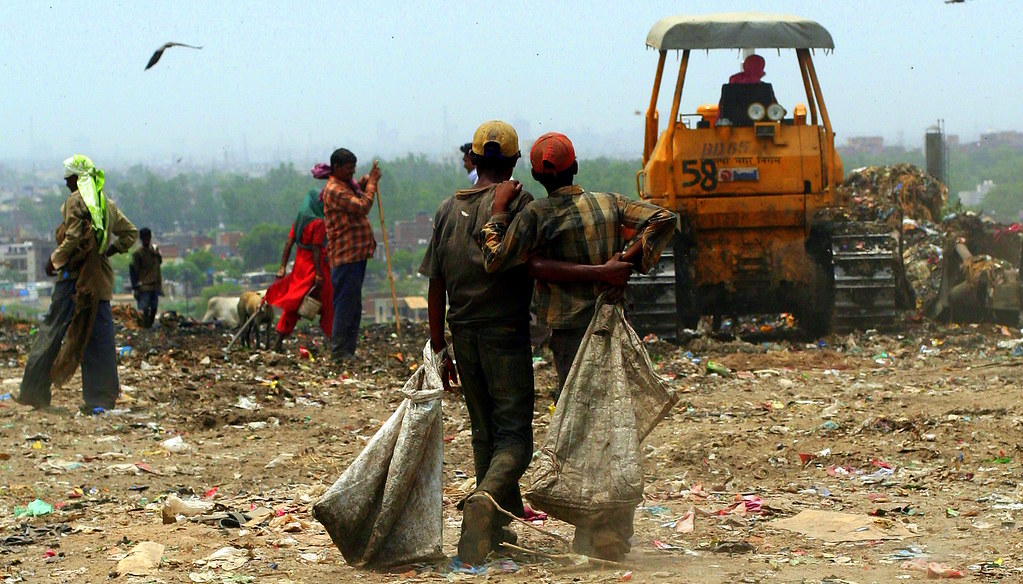 |
| Photo credit: mackenzienicole |
One person’s trash is another person’s treasure. And no one knows this more literally than the world’s estimated 15 million waste picker population. Living off of the discarded, waste pickers — also known as rag pickers, informal recyclers and scavengers — rummage through landfills, garbage cans and street corners picking up trash that can be recycled. These trashed goodies are then sold to middle men and recycling plants and have, in some cases, helped waste pickers escape poverty.
Take for example Delhi's estimated 150,000 waste picker population. Invisible to the rest of society and struggling to make ends meet, these impoverished individuals take to the streets to earn a living. Informal recycling becomes a family affair as many street children join in the trash digging and skip out on their education. Selling scraps to middle men and recycling plants, Delhi's waste picker community actually makes a difference! Approximately 20% of the Indian capital's trash is recycled by waste pickers, saving the city around 12 lakh rupees (USD $2500) each day. And if you think that number is low, take into consideration India's concept of efficiency — a good chunk of government-paid trash collectors don't even show up for work.
But to no surprise, rummaging through trash is not all that rosy. Aside from India's own rubbish, Delhi's waste pickers are sorting through trash from you. Yes, you! Tons and tons of e-waste are dumped by the United States in many developing countries around the world with India being a major destination. And the aftermath of trashing technology is being felt by the waste picker community in the worst way. Marinating in dangerous chemicals all day, waste pickers, many who are children, face respiratory, urinary, digestive and immunity problems. By the time they are in their thirties, many can no longer work, if they survive the toxic exposure at all. And the statistics for this community are grim. Unprotected by the government, waste pickers in India will have to deal with 500 percent more e-waste from computers by 2020, according to UNEP.
But what the waste picker communities signify is more than just another underprivileged group that is ostracized and suffering. Believe it or not, the poor have say in the greening of the world and should be recognized as valid players in the green movement. Urban poverty reduction and environmentalism are more intertwined than you might think.
A case in point — scavengers across Latin America have been able to organize themselves in order to work their way out of poverty. Forming cooperative organizations and negotiating with middlemen, recycling plants and city governments, these scavengers have made informal recycling a major tool for sustainable development. Not only do they improve their own working conditions but they green the environment in the most efficient and cleanest way.
Learn more about the lives of these informal recyclers through the following films:
Wasteland: This Oscar-nominated documentary follows a group of Brazilian waste pickers in the world’s largest landfill.
Garbage Dreams: The documentary films three teenagers on the streets of Cairo who are suddenly faced with the globalization of the waste picking trade.
Counterbalance: Produced by the non-profit WITNESS, Counterbalance follows the work of Chintan, a non-profit devoted to helping waste pickers in Delhi, India.
